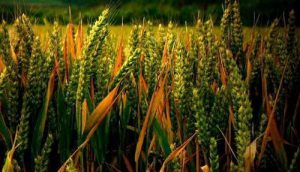
On Tuesday, Prime Minister Narendra Modi reiterated that the Centre and state governments will take all steps to ensure the supply of “essential items” during the lockdown to combat the novel coronavirus, which has now been made nationwide and extended for a further 21-day period. The Indian Express takes stock of how prepared India is to meet the supply requirements of the most essential of items: Food.
What is the domestic availability situation in foodstuffs? To what extent would the restrictions on account of COVID-19 impact it?
There’s no real issue as far as production or supply goes for most agri-commodities, starting with foodgrains. As on March 1, stocks of wheat and rice with the Food Corporation of India (FCI) stood at around 77.6 million tonnes (mt). This was over three-and-a-half times the minimum operational buffer-cum-strategic stock of 21.04 mt required to be maintained for April 1. Moreover, the new wheat crop, which is a bumper one, will arrive in the mandis from the coming month.
The same applies to pulses, where the National Agricultural Cooperative Marketing Federation of India or Nafed was holding 2.25 mt of stocks as on March 19. This, even as fresh market arrivals of rabi (winter-spring) pulses such as chana (chickpea), masur (red lentils) and matar (field pea) have started.
COVID-19’s impact will not be on production, given that most rabi crops are close to ripening, if not already harvested. The impact will be only on marketing the produce at the mandis and reaching it to the final consumer. Simply put, it isn’t a “supply”, but a “supply chain” problem arising from the various movement restrictions imposed under the ongoing lockdown. But for the rice, wheat and pulses with FCI or Nafed, even that shouldn’t be a problem, as the grain has to merely be moved from godowns and supplied to ration shops. This can, in fact, be an opportunity for the Centre to significantly offload its surplus foodgrain stocks – including to regular grocery shops at open market rates.
What about stuff like milk, sugar and edible oils?
These, again, are produce not brought to be sold in mandis. Dairies procure milk directly from farmers or through bulk vendors. The sugar that mills produce similarly comes from cane sourced straight from growers. Two-thirds of the edible oil consumed by India is imported. There, too, the problem of the crop having to first come to an APMC (agricultural produce market committee) mandi does not arise.
In the current lockdown situation, there are actually mitigating factors on the supply requirement front, particularly for the three food items. The most important of them is the demand destruction due to shutting down of HORECA (hotels, restaurants and catering) businesses. With hardly any business-to-business (B2B) sales happening, the demand for milk products, sugar and edible oil is now only in the business-to-consumer segment.
This has had two effects.
On the one hand, direct consumer sales of milk, curd, sugar and branded oils have gone up in the past few days, with households buying more in anticipation of shortages. R.S. Sodhi, managing director of the Gujarat Cooperative Milk Marketing Federation, claims that the daily sales of ‘Amul’ milk are currently about 37 lakh litres in Delhi-NCR and 22 lakh litres in Maharashtra, as against their normal respective levels of 31-32 lakh litres and 18-19 lakh litres.
But on the other hand, sales of skimmed milk power (SMP) to ice-cream companies and cheese to pizza makers have crashed, as consumers aren’t eating out and focusing on basic foods. This has led to SMP prices crashing to Rs 250 per kg, from Rs 320-330 per kg till roughly 15 days ago, with some Maharashtra-based dairies mainly into B2B sales slashing their procurement price for cow milk from Rs 32-plus to Rs 20 per litre. In sugar also, mills are seeing less buying from the sweetmeat, soft drinks and HORECA segments. Nor are oil marketing companies lifting ethanol, a by-product of sugar manufacture used for 10% blending with petrol. The reason: People sitting at home and not taking out their vehicles.
The above demand destruction on account of B2B is, nevertheless, ensuring that existing supplies are enough to meet the requirements of household consumers or B2C.
So, which are the food products whose supplies are being affected?
Basically fruits and vegetables (F&V), which are produce sold through APMC mandis. Fruit traders and commission agents at the Vashi market of Navi Mumbai have announced suspension of their operations from Wednesday, fearing the spread of coronavirus. Such closures are, however, more likely in terminal markets close to cities than the primary APMCs, where the bulk of farmers bring their produce. Right now, the fear of the pandemic is less in rural areas, though Jitender Singh Hooda, a sugarcane farmer from Kheri Bairagi village of Uttar Pradesh’s Shamli district, anticipates a 25-30% harvesting labour shortage in the coming days. According to him, many migrant labourers have fled to their villages in Bihar, which will hit cane harvesting when crushing operations in UP are at a peak.
What are the steps the government must take in the coming days?
In his first address to the nation on dealing with COVID-19, the Prime Minister mentioned that all necessary steps would be taken to ensure “no shortage of essential items like milk”. That specific reference has, perhaps, helped in the largely unhindered supplies of milk from the rural hinterland to urban centres across India. Unfortunately, the same approach has not been visible in other food items. Indiscriminately imposed inter-state movement restrictions have resulted in tomato-laden trucks from Madanapalle in Andhra Pradesh not crossing over to Bengaluru or brinjal and beans from Chikkaballapur in Karnataka not reaching Hyderabad’s consumers. Alphonso mangoes and grapes not being allowed to move freely will hurt growers in Ratnagiri and Sangli just when their crop is being harvesting.
There are similar reports about F&V collection and distribution centres of online grocers being forcibly shut down; sugar mills in UP running out of lime, sulphur and HDPE bags procured from Rajasthan and Gujarat; and labourers engaged in grading and packing of produce not being permitted to go their workplaces. All these impediments need to go at the earliest – like in milk from day one of the lockdown.
Source: Indian express
Link:https://indianexpress.com/article/explained/coronavirus-india-lockdown-food-supply-chain-6330203/




